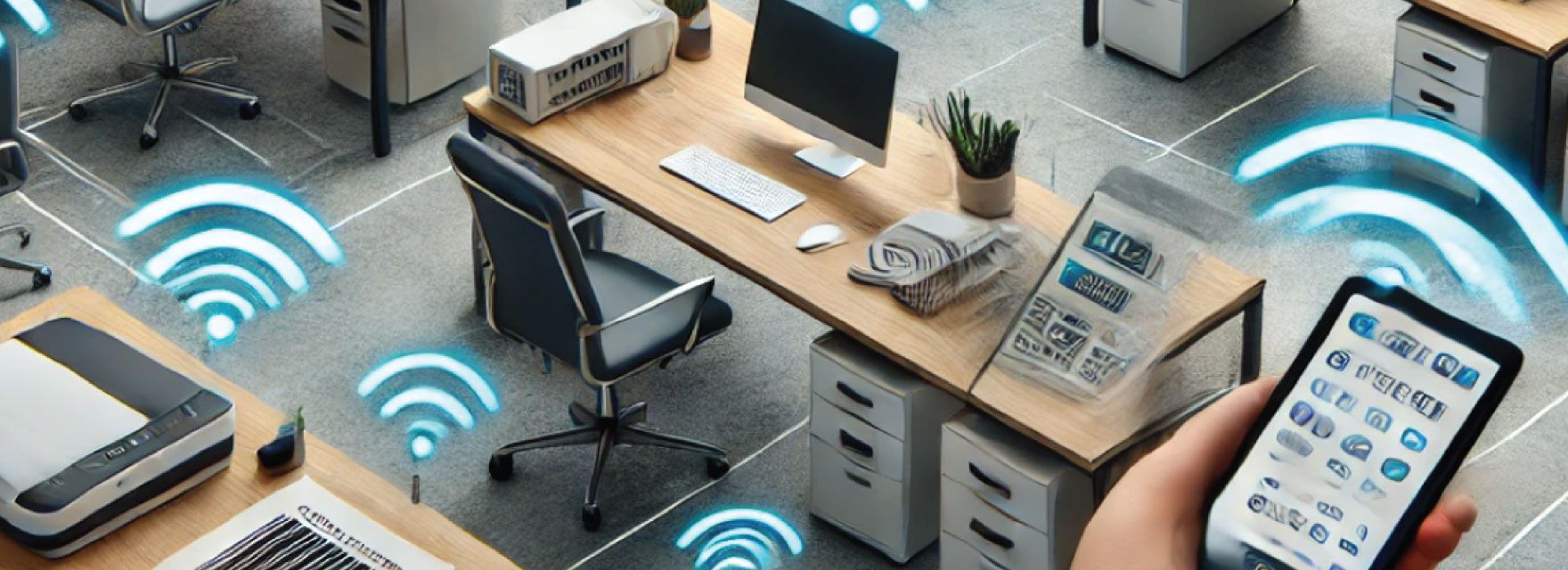Are you struggling with outdated asset records, compliance issues, or the inefficiencies of manual tracking methods?
These challenges can lead to significant financial losses and operational disruptions. Manual asset management and tracking of thousands of assets in a company is expensive, takes lots of time & effort, and still prone to error! If you are facing these challenging, RICOH’s solution serves the effective management of all types of assets including equipment, tools, devices and returnable transport Items such as pallets and racks. Asset management system helps increase efficiency in managing and organizing assets in the organization for maximum benefit in order to reduce costs and expenses in managing assets that are complicated and repetitive and helps to record information and various details of assets.It is to provide comprehensive visibility and control over an organization's assets, allowing for efficient planning, utilization, maintenance, and disposal of those assets.
Features

Key Technologies in Asset Tracking
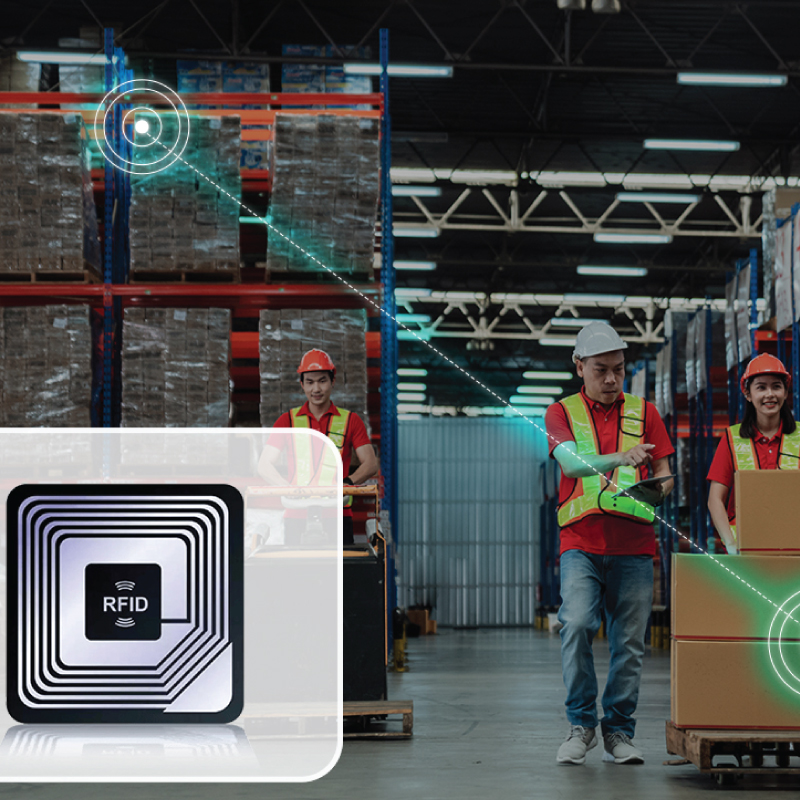
RFID Technology
Radio Frequency Identification (RFID) systems consist of three main components: tags, readers, and a backend database. Each RFID tag contains a unique identifier and is affixed to the asset of interest. When the tag comes within range of an RFID reader, it transmits its unique identifier wirelessly to the reader, which then forwards the data to the backend database for processing. This real-time data capture enables organizations to track assets accurately
An RFID system consists of 4 main parts.
RFID printer is a device that prints data onto RFID tags. Recommended models: ZT231, ZT411, ZT600 series and ZQ500 Series
An RFID reader is a device that sends radio waves to an RFID tag and receives the data sent back. Recommended models: RFD40, RFD90, MC3300, FX9600 (fixed reader)
RFID tags are tags attached to objects to be tracked. They are available in both passive (no power, uses power from the reader) and active (have a built-in battery, allowing the signal to be transmitted over a long distance).
Data processing software system processes data received from RFID readers, stores data, and generates reports.
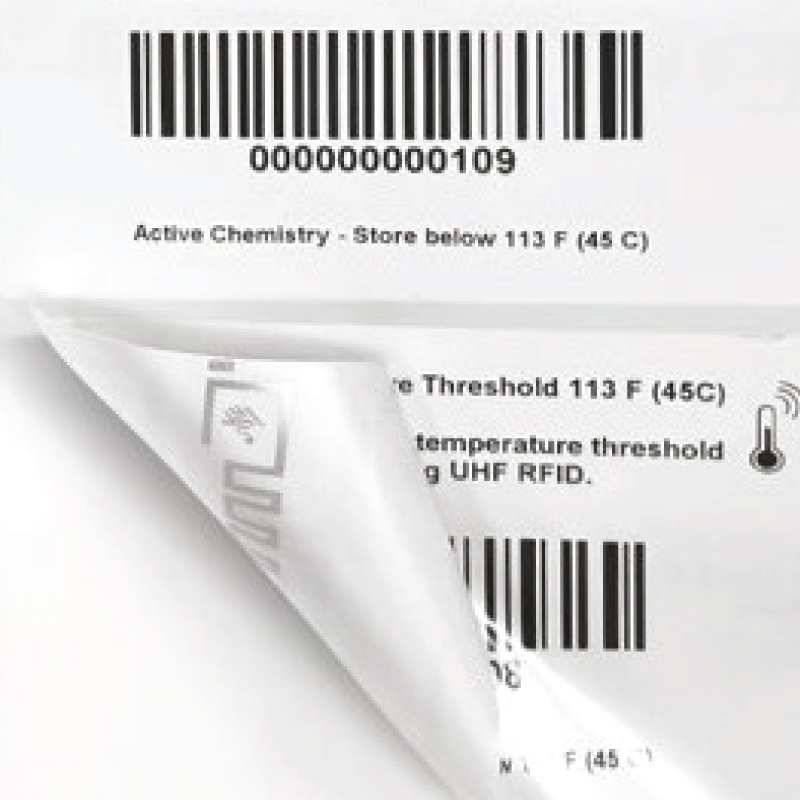
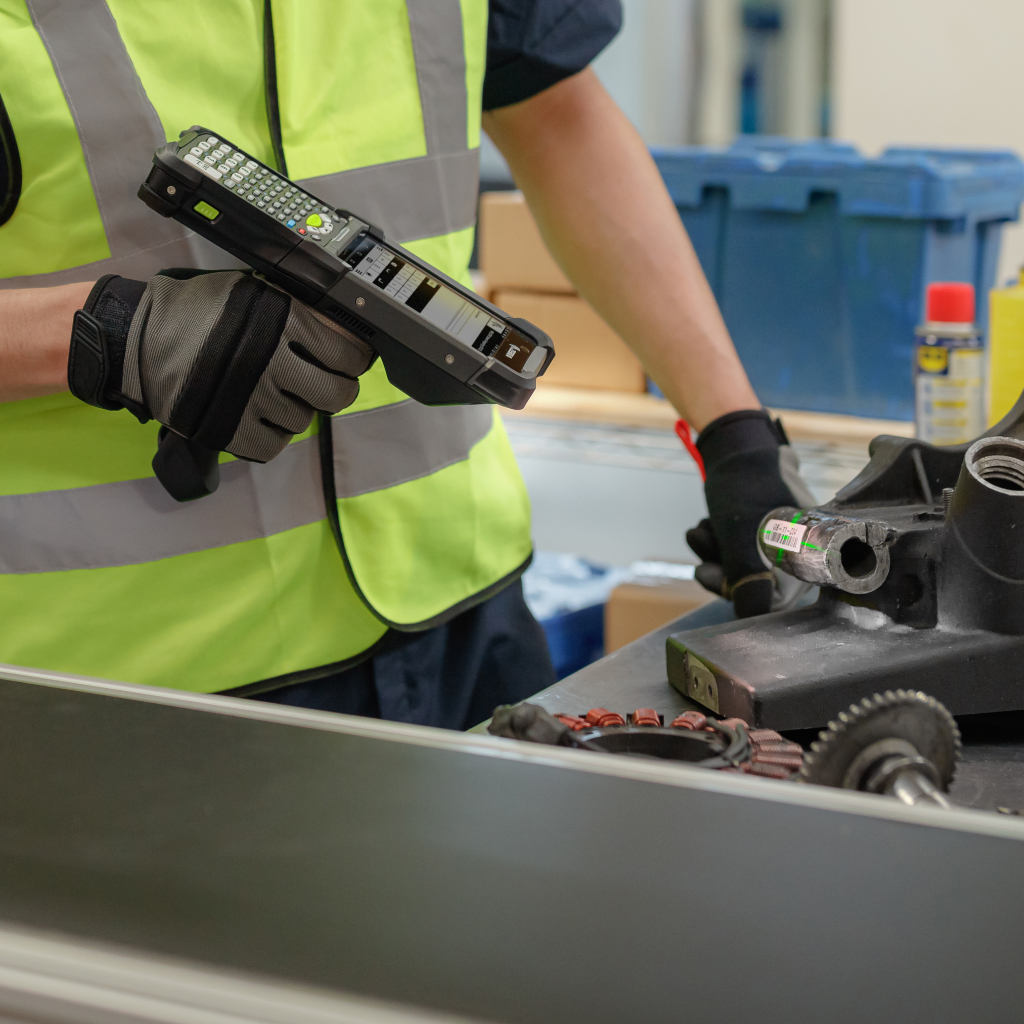
Barcode technology
Each barcode encodes a unique identifier, such as a product serial number or asset tag, which is scanned using a barcode reader, which interprets the barcode pattern and retrieves relevant information from a centralized database, enabling rapid asset identification and tracking.
The barcode system consists of 3 main parts.
Barcode printer for printing barcodes on labels or various materials. Recommended models: ZD230, ZD421, ZQ300 plus, ZQ500 Series, ZT231, ZT411, ZT600 Series
Barcode Scanner is a device used to read data in barcodes and convert it into information that can be understood by a computer. Recommended models DS2209, DS2278, DS3608, DS3678, DS4608, DS4678
Labels and ribbons
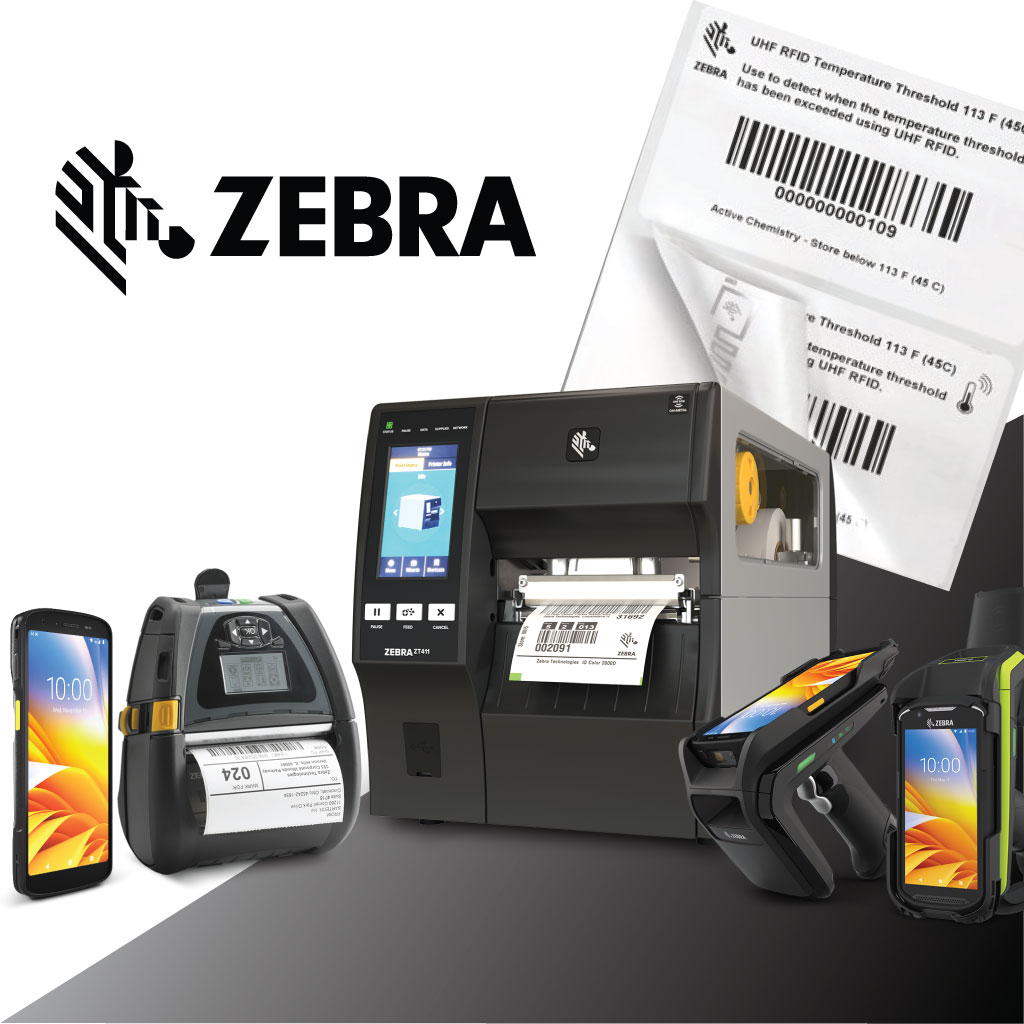
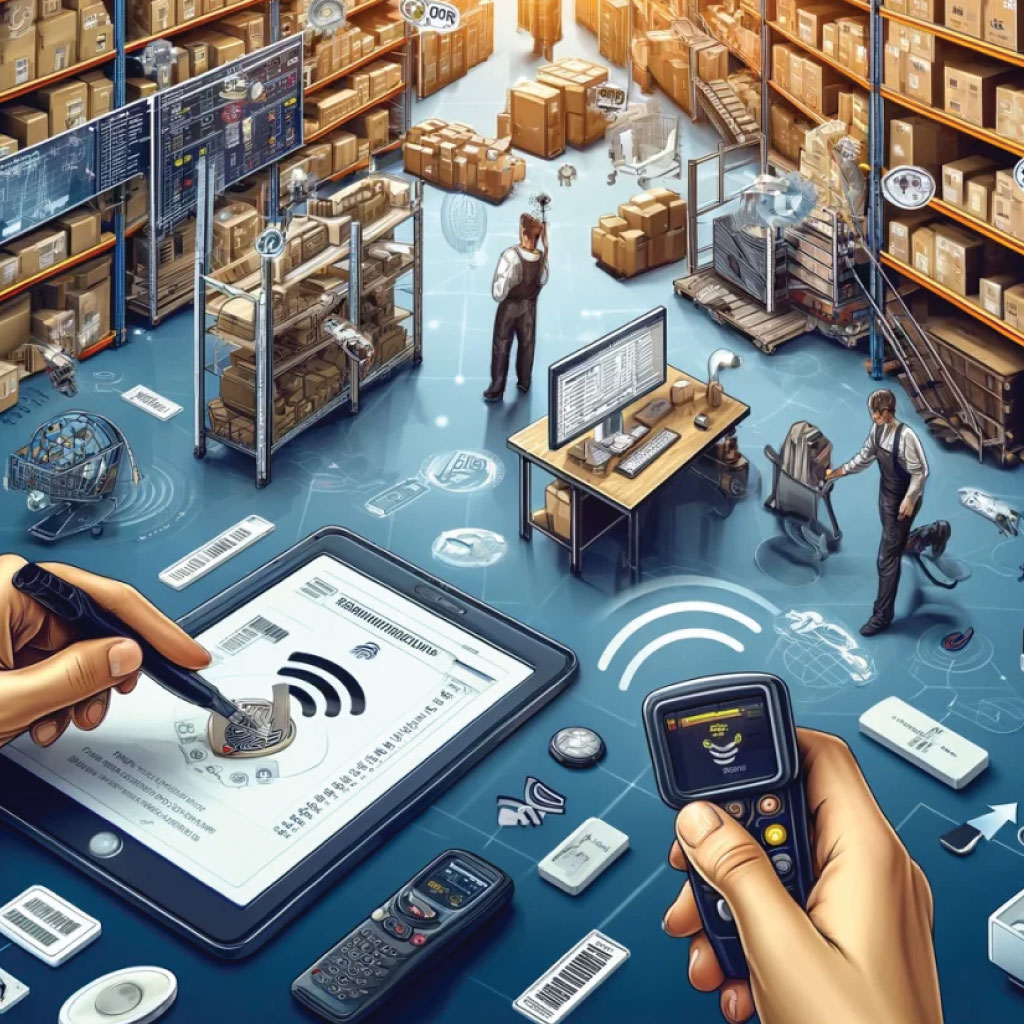
RFID VS Barcodes
RFID (Radio-Frequency Identification) and Barcodes are both technologies used for identifying and tracking items but they differ significantly in their operation and capabilities. They have become go-to solutions for businesses looking to optimize their processes such as inventory, WMS or asset tracking. Each technology brings its own unique benefits and challenges, providing different ways to track and manage products effectively.
Benefit of Asset Management System
Better Asset Visibility
You can make sure that you have clear visibility into all your assets. It stores the information in a single, central database that you can get detailed information on each asset, like the date and price of purchase, its current location and status, unique ID number etc.
Tracking All Physical Assets in Real-Time
You can ensure that your asset registers are always up-to-date and error-free by Barcodes, QR codes, RFID tags, etc.
Eliminate Ghost Assets
Ghost assets are assets that you’re unable to physically see but still appear in the register. These assets may be recorded wrongly, and it remained in the system. Asset management software will instantly identify ghost assets and lets you rectify the error. This means that you don’t have to pay tax or insurance premiums on assets you don’t own.
Eliminate Manual Systems
With automation, it will eliminate manual methods like whiteboards and spreadsheets, which are more prone to errors, have no historical records, and can be cumbersome to share across departments or teams within the same department even. The more data you have to collect, the higher the chances of errors being made. Asset management software will be truly effective for your business in the long term
Locate assets easily
When you run a business where you move physical assets around a lot, you need to know where your assets are at a given time. Tracking tags using RFID, and other technology, integrated with the asset management system can locate your assets in an instant, helping you know where any of your equipment is at a given time.
Better Manage the Asset Life Cycle
This helps in procuring, operating, maintaining, and disposing of as efficiently as possible. Four main stages in the life cycle of an asset:
Planning – Recognizing the necessity of procuring a particular asset
Acquisition – Buying an asset and assigning
Operation – When the asset is used for the organization’s activities
Disposal – When an asset is no longer operable, it has to be sold or retired after its depreciation value is calculated
Reduce loss and Prevent theft
Loss can happen in many different ways from human error and thefts do happen, especially in large businesses. With the right asset management software, you can ensure that this does not happen.
Keyword: Asset Control, Asset Management, Asset Management software, Asset Management system, Barcode Asset Tracking, Check Asset, Asset tracking

Get in touch with one of our consultants and find out how we can help you.
Let's Connect
